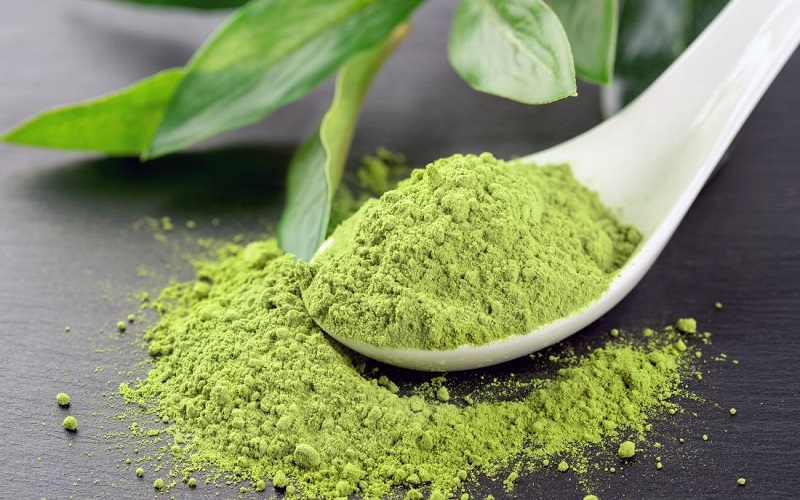Is matcha good for you?

In recent years, the consumption of matcha has become increasingly popular in the West. But what is a novelty on this side of the world is an ancient tradition in Japan. More than a trend, matcha is a way to take advantage of all the antioxidants in green tea in a much more efficient way. Here we tell you everything you want to know about this infusion.
Is matcha good for you?
Matcha is a type of green tea, but unlike common whole leaf green tea, it is powdered. Thanks to this, all the characteristic antioxidant power of the tea plant is much more concentrated; hence it is used by those who want to obtain the same benefits of green tea in a faster way.
Matcha tea and its benefits
Matcha is a type of green tea with great antioxidant power. Unlike other teas, it is powdered. Although matcha is popular in Japan, it actually originates from China, the birthplace of Camellia sinensis, better known as the tea tree.
Ground tea was used by the Chinese during the Song dynasty (960-1279), but its use diminished over time. The custom of drinking powdered tea was kept alive by apprentices of Zen Buddhism, who traveled from Japan to China to train, and back to their monasteries, brought ground tea for their ceremonies and meditations.
What began then as a ceremony typical of Buddhist monasteries in the 12th century escalated to the highest social classes of Japan in less than a century? Little by little, matcha was permeating all sectors of society until it became a common ceremony in the 16th century.
The matcha tea ceremony in Japan
In the 16th century, Sen no Rikyu – an emblematic figure in Japanese tea history – established the principles that govern the ceremony to this day: harmony, respect, purity and tranquility. For him, each ceremony was a moment “that should be treasured as it might never be repeated.” His teachings on the tea path were so relevant that they had a direct influence on other arts, such as architecture, garden design, calligraphy (shodō), the art of flower arranging (ikebana), among other practices.
The cha-no-yu or chadō, as the tea ceremony is known in Japanese culture, can be performed alone, but it can also be a complete social event, lasting about four hours, and includes the consumption of frugal food or traditional Japanese sweets to accompany the consumption of matcha.
In the West, there are more and more places where a Japanese tea ceremony can be appreciated. It is such a meticulous ritual that there are those who spend years studying it. In order to be invited to a formal ceremony, a minimum of knowledge about the postures, gestures and even phrases that are used in this event is required.
How to prepare matcha?
The search for a healthier lifestyle, focused on the well-being and the consumption of natural foods, caused matcha to undergo a second discovery, but this time in the West.
Today, it is possible to have matcha the traditional way in coffee shops or tea houses, but you can also enjoy a latte version with plant-based milk. It is also possible to find it incorporated in ice creams, creams, cakes, pancakes or smoothies, to name a few preparations.
Properties and benefits of matcha
Matcha, like traditional green tea, is rich in L-theanine, an amino acid that encourages relaxation without causing drowsiness.
In addition, although it has caffeine, it is absorbed into the body very slowly (between 6 and 8 hours), which generates a feeling of energy, but without the “crash” that coffee can cause in some people.
It is also rich in catechins, a type of antioxidant that has been shown to be efficient in the oxidation of fats and in the prevention of diseases such as arthritis and some types of cancer.
Matcha has a higher chlorophyll content than other teas. Chlorophyll, in addition to being responsible for the green color of plants, has detoxifying properties, making it very useful for releasing toxins from the body.
What makes matcha so special?
Although matcha comes from the same leaves from which traditional green tea is obtained and shares its properties, being processed in powder form, the content of antioxidants and nutrients is concentrated. On the other hand, when the strands are infused, although we obtain some benefits through the resulting drink, a part remains in the leaves.
That’s why a cup of matcha can have up to 10 times more antioxidants and nutrients than a cup of green tea strands.
How to prepare matcha?
To prepare ground green tea in the traditional way, you only need to place a measure of matcha (a small teaspoon) in a bowl called chawan. Then, the hot water (80 ° C) is incorporated and it is beaten with a bamboo whisk.
If you don’t have any of these elements, you can do the same procedure in a medium bowl or bowl and shake with a fork until the matcha dissolves.
Another way to incorporate matcha into your daily routine is by adding it to your smoothies or cake, cookie, and pancake mix.
How to recognize a quality matcha?
Good matcha has to have the following characteristics:
Intense green color: the greater the intensity of the color, the higher the chlorophyll content and the more tender the shoots that were collected at harvest. Therefore, matcha will have more antioxidants and concentrated nutrients.
Texture: A lumpy matcha is a tea that has not been well processed. Well-ground matcha will have a nice texture to the touch.
Origin: matcha, in principle, must be of Japanese origin. Currently, some tea-producing countries are growing and processing their own matcha, but the quality is far inferior.




